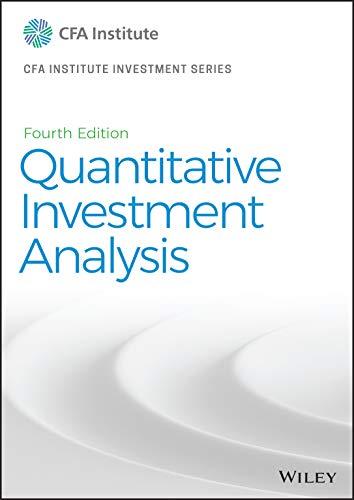14. You are analyzing the variables that explain the returns on the stock of the Boeing Company....
Question:
14. You are analyzing the variables that explain the returns on the stock of the Boeing Company. Because overall market returns are likely to explain a part of the returns on Boeing, you decide to include the returns on a value-weighted index of all the companies listed on the NYSE, AMEX, and NASDAQ as an independent variable.
Further, because Boeing is a large company, you also decide to include the returns on the S&P 500 Index, which is a value-weighted index of the larger market-capitalization companies. Finally, you decide to include the changes in the US dollar’s value. To conduct your test, you have collected the following data for the period 1990–2002.
Rt ¼ monthly return on the stock of Boeing in month t RALLt ¼ monthly return on a value-weighted index of all the companies listed on the NYSE, AMEX, and NASDAQ in month t RSPt ¼ monthly return on the S&P 500 Index in month t
Xt ¼ change in month t in the log of a trade-weighted index of the foreign exchange value of the US dollar against the currencies of a broad group of major US trading partners The following table shows the output from regressing the monthly return on Boeing stock on the three independent variables.

From the t-statistics, we see that none of the explanatory variables is statistically significant at the 5 percent level or better. You wish to test, however, if the three variables jointly are statistically related to the returns on Boeing.
A. Your null hypothesis is that all three population slope coefficients equal 0—that the three variables jointly are statistically not related to the returns on Boeing. Conduct the appropriate test of that hypothesis.
B. Examining the regression results, state the regression assumption that may be violated in this example. Explain your answer.
C. State a possible way to remedy the violation of the regression assumption identified in Part B.
Step by Step Answer:







